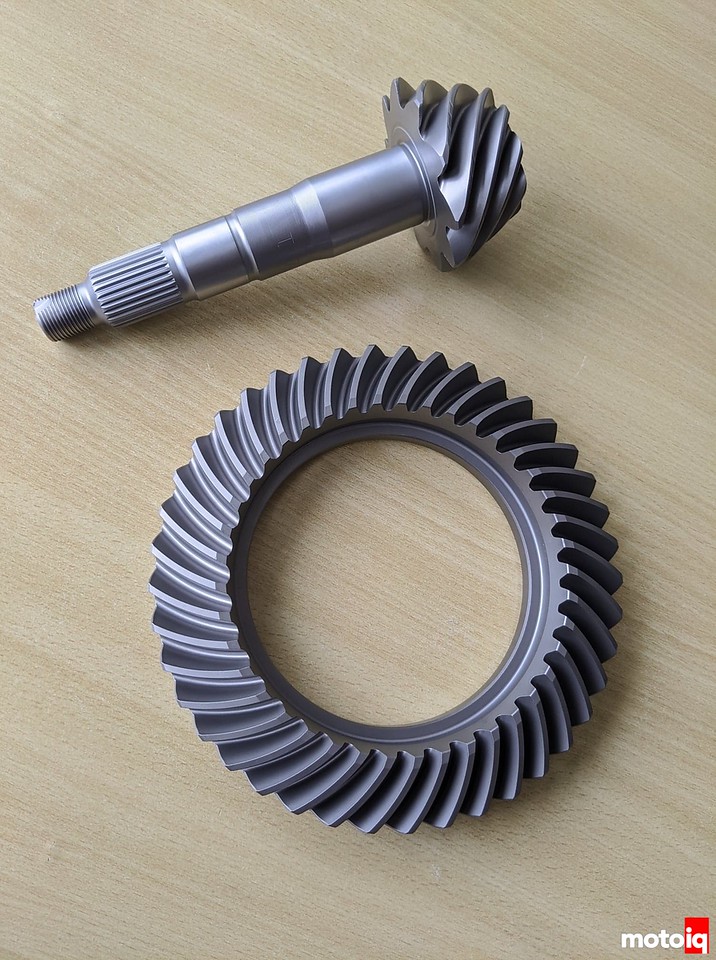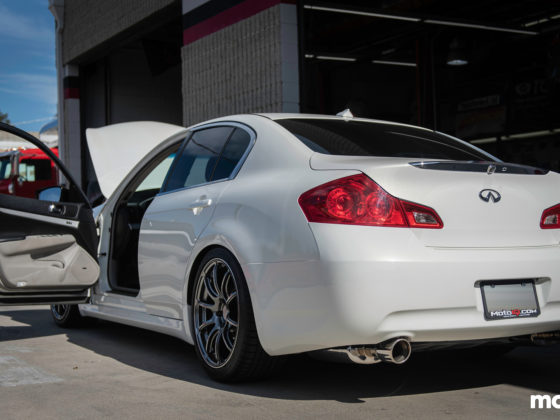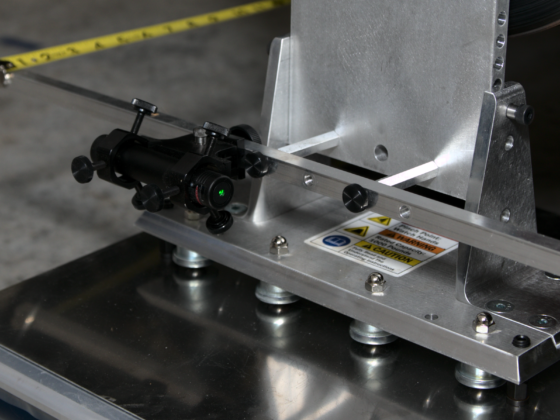Cryo treating as done by CTP Cryogenics works by slowly cooling the parts using liquid nitrogen, holding them at a low temperature for a set time then slowly warming them up, followed by a tempering heat treating cycle. This is a vastly superior process to what some companies do which can be as crude as putting parts in a cooler and pouring liquid nitrogen on them!

After cryo treatment we brought our gears to AFCO, an aerospace metal treatment company just down the street from MotoIQ to subject them to a severe shotpeening treatment that theu concocted for hard, large-section but complicated parts. Shotpeening is the bombardment of the surface of the steel with hard iron shot at high velocities. Mil-Std-13165c. AFCO, our shot peener typically uses hard steel shot in the range of Rockwell 55-65 C scale, mostly size 230 but sometimes size 330 to treat our parts. Usually, the Almen intensity is from .012 to .020 depending on the shot size and material. We let them decide what is best for our application.

Our shotpeening process refines the grain of the surface of the metal to a depth of around 2-3 thousands of an inch and imparts a compressive stress on the surface. This creates a skin on the surface of the part in which cracks have a hard time developing. Shotpeening can improve the fatigue strength of a steel part over 100%.
After shotpeening we take the gears to be WPC treated. WPC is a Japanese micro shotpeening process where the parts are hit with very small, very hard spherical ceramic and metallic dry lubricant elements at ultra high speeds. WPC leaves a very fine, hard, wear resistant and low friction surface finish which has superior grain refinement and development of compressive stress at a shallower depth when compared to shotpeening, of about one thousands of an inch. WPC can also be applied to delicate parts and gets easily to the bottom of gear teeth and shaft spline roots.
WPC greatly reduces friction and heat build up which is often a problem in cars driven on road courses and reduces power loss through the drive train WPC has no negative side effects and greatly strengthens, increases life and reduces friction on parts. WPC usually also results in a 100% or greater improvement in fatigue strength with improvements in surface hardness and tensile strength as well. If you want more details on how WPC works, be sure to check out our What is WPC Treatment and Why Do We Use It video.

The ring gear bolts are also under a lot of stress and when doing a post-mortem of failed 86 diffs we have found that with this Toyota diff, the ring gear bolts are often loose after hard use. In the Pikes Peak Car we found evidence that the bolts worked loose, loosing clamp force resulting in bolt shank fatigue and causing the ring and pinion gears to loose depth and backlash adjustment damaging them. Then the bolts shear failed and the car ground to a stop.




8 comments
I have treated Internal Combustion engine and gear-train assemblies with Cryogenics for some 20 years now. Why? Because through decades of serious race testing and flogging…it WORKS!
All treatments are beneficial. However, surface treatments are exactly that, surface treatments. Cryogenics probes down into the metal beyond a components surface to realign the parts internal grain structure.
In 2000 I modified a Honda CR-500 (491.4 cc’s or 29.9 CID) . We increased its stock Torque output of 53.3 Lbs Feet to 100 Lbs Feet of torque at the rear wheel. The stock 5 speed gear box was not happy and soon exploded, gears, bent gear shafts and destroyed the engines left side case.
I had the gears, gear-shafts, shift forks and engine cases, cylinder and cylinder head all Cryogenically treated. We never had another problem. The engine is still together and operational today.
Don Redmon
Replika Maschinen, Inc
Instagram.com/replikad/
So staring down the barrel of doing stuff with a small quick change that needs a new ring and pinion… where would you slot ISF treatment in, in order of operation?
In the same order of operations as described in the article.
From what I’m seeing it looks like you went cryo, shotpeening, WPC – I was wondering if ISF finishing had a place in things since I’m more concerned with friction losses than strength.
One thing I noticed about ISF finishing is that it does change clearances a few thou even though they say it doesn’t. WPC is pretty good for friction reduction and helps by increasing fatigue strength as well.
I’ll reach out to the vendors you brought up for a quote once I have my replacement R&P in. Every little bit helps.
Definitely not drifting power capability, but I’m doing design work on fitting a Miata/S2k size LSD into the quick change I’m going to be running. Prototyping it with stock RX-7 LSD, but if that works no reason I can’t perform similar mods to an OS Giken diff.
Which quick change? OS and carbotech make drop in ones for Winters.
Speedway Mini Stock – SCCA GT3 class car so limited horsepower and I’ve got a really aggressive weight target. There’s the ICP Variloc that’s off the shelf if I can’t modify something to work, but I think the OS has some tuning options.